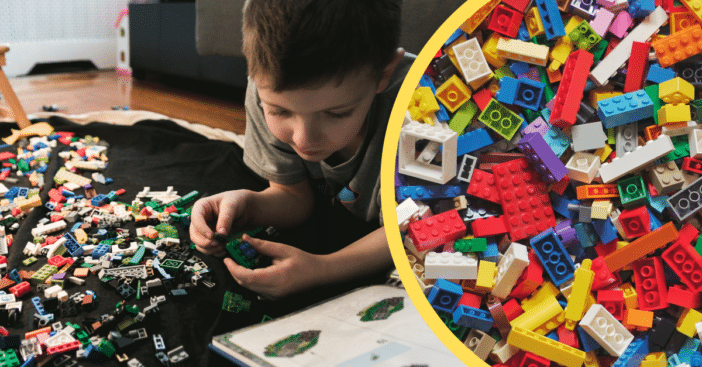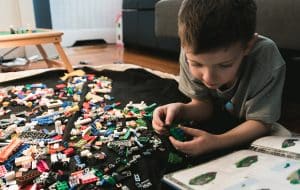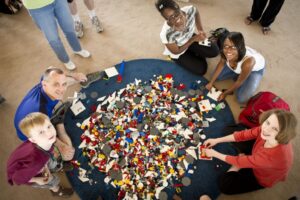
LEGO, from the Danish phrase “leg godt,” meaning “play well.” As a company in the business of interlocking toys, the Lego Group started selling internationally in the 1960s. But the true beginning of LEGO’s tale traces back to the Billund, Denmark workshop of a carpenter named Ole Kirk Christiansen, who laid the groundwork for an enduring toy company back in 1932. This year, LEGO celebrates the 90th anniversary of its groundbreaking, brick-laying history – and it wants to celebrate with everyone, kids and adults alike, with an initiative to keep everyone playing creatively.
It was back in 1932 that Christiansen made the big switch from ladders to toys. Gradually, the small, wooden creations evolved to the connecting bricks known by builders the world over. In celebration, the company is promoting its Rebuild the World campaign, backed by a presentation called We Are All Builders, which encourages people of all ages and backgrounds to embrace their inner builder. Just how far have these little blocks come, and where are they going nine decades later? Find out here.
LEGO celebrates its 90th anniversary from simple roots
Happy 128th Birthday to Ole Kirk Christiansen, the founder of The LEGO Group.
From his start as a humble carpenter to creating the World’s largest toy company, he showed that anything is possible with creativity and a little imagination… #OleKirkChristiansen #LEGO pic.twitter.com/9tqI62Myco
— Im Rick James Bricks (@RickJamesBricks) April 7, 2019
In the spirit of his budding creation, Christiansen’s toys were gradually built up from a very different-looking foundation that made it near impossible to imagine where it would end up. He initially sold bigger, useful household tools like stools and even ironing boards. But these goods required a lot of resources he had trouble acquiring. Toys, however, used less wood, and so he turned to making things like wooden ducks. By ’46, he was manning a proper business with enough growth he could experiment with materials such as plastic and a new plastic injection molding. Three years later saw the birth of Automatic Binding Bricks, the early term for what we know today as LEGO bricks, or “elements,” as they’re called among builders. LEGO’s success actually defied many expectations that families – especially children – would shun plastic toys and favor wood. The possibilities would only increase with the 1978 introduction of the minifigure.

RELATED: LEGO Once Created Anti-LEGO Slippers To Avoid The Pain Of Stepping On Them
When Christiansen’s son Godtfred joined the company in 1954, he collaborated with overseas buyers and really imagined how LEGO products could be a vehicle for imaginative play. Thinking creatively was just the start, and would have to be done more to come up with the modern brick design we know today. To this day, a lot of thought and planning goes into designing these toys, aided now by computer programs to design entire elaborate sets and models that are play-tested in-house.
“We’re all builders”

LEGO’s 90th-anniversary campaign calls for everyone to embrace their inner builder – because while sets may come with a handy instruction manual, there are 915,103,765 different ways to combine six 2×4 bricks. Now multiply that by 300 pieces, typical of sets geared towards younger builders, or the 2000 pieces seen in the 18+ kits. LEGO has been busy online celebrating this fount of creative potential available to fans of all ages. “It has always been innately and uniquely human to be a builder,” the LEGO 90th-anniversary video says. “We can’t help ourselves. It’s in our bones to build, to take the world around us and build it into something more playful – something bigger, stronger, stranger.”

That means promoting the famous Lion Knights’ Castle set, now with 4,514 pieces, and bringing back the Galaxy Explorer set from 43 years ago – now with 1,246 pieces, available for pre-order as of June 18 and general availability on August 1. LEGO has also partnered with all sorts of pop culture figures to let their imagination run wild. Earlier, Alicia Keys participated in an interview in which she advised, “Use play to find your voice by just being who you are.” LEGO has certainly encouraged a wide audience to be themselves; as of 1998, it is honored as one of the first inductees in the National Toy Hall of Fame, and in 2011, sets were sent to the Space Shuttle Endeavour for some research and play in microgravity. What’s next for LEGO as it passes its 90th anniversary? Only our creativity will tell.
What was your first LEGO set?
